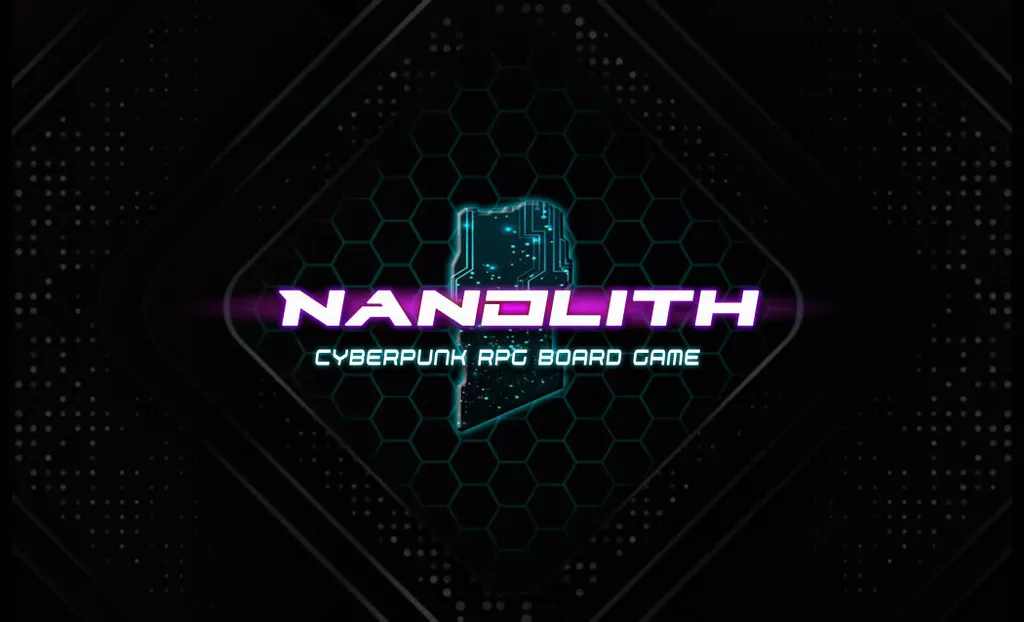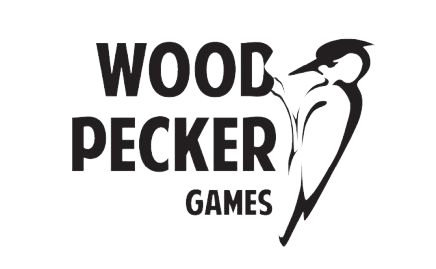We all love games. That's for sure. But there is one feature which fascinates me more then any other thing in gaming. It's the size of a game. Size is a very general term. So let me explain.
To explore the structure of a game for the first time, resembles entering an unkown building for the first time. Let's say the the dome of limburg or the pantheon in rome.
We look around, we are amazed at the structure of the rules system, explore the details of the surroundings and gaze at the proportion of the layout.
Regarding a few games I remember exactly the sense of wonder I was experiencing when I played them for the first time. I looked around and could not find an end of the game's structure at the horizon. Something like this is impressive. And a little bit intimidating.
But most importantly it is one thing: It's a promise to explore a vast room of gaming possibilities.
This space of possibilities can be very different. Let me give you a few specific examples and then talk about Nanolith.
Two games I think are most suitable to illustrate the aspect of size or space in games. ASL (Advanced Squad Leader) and Kingdom Death Monster.
ASL – Advanced Squad Leader (1985/Avalon Hill):strip_icc()/pic6709608.jpg)
Let's talk about Advanced Squad Leader first.
If you don't know it: ASL is a hex and counter wargame from the eighties that is still played today (mostly by a very passionate group of historics, teachers and militairs).
In this game it's possible to simulate battles of the second worldwar, mostly situated on maps which refer to the airial reconnaissance of the time and using troop types which resemble the actual troops from the historic situation as closely as possible.
This sounds quite cool, doesn't it? I mean: It sounds cool if you are into historic wargames in any way 
But this historical approach is not what makes ASL so incredibly innovative.
The real wonder of ASL (some would call it more appropriate: „Frankensteins monster“) is it's rule system.
In ASL it's theoretically possible, to simulate any military situation of WWII you could probably think of. Be it american parachutists invading a french village occupied by a german panzerbataillon during operation market garden, the advance of american destroyers and landing ships on a solitary island in the middle of the pacific in which the japanese troops buried themselves in labyrinthic tunnels, or the uprising of jewish partisan troops in the Warschau ghetto in April 1943.
The rule system can handle any of these situations.
Theoretically.
Practically you and your opponent arre looking through the rules index to find the apppropriate rules interaction for about 60 to 70 percent of your playtime. Or that's at least how we play it 
If you don't like this kind of „cooperative rule searching experience“ you won't like ASL …
So this is one of the wonders of ASL. And one of the examples of a games size: incredible possibilities to simulate almost all of the imaginable situations which could occur inside the game.
And because of this there are countless new possibilities of this game for me to explore. It doesn't matter how long I will play it. I am bored by streetfighting in Stalingrad? Let's have some landing in the normandy and explore the rules for ship bombardement. Ever played with glider attacks in the greek mountains. Let's check out how this plays!
Something else regarding ASL: This game originates from a time in which monstrous love for rule details was totally en vogue. ASL is a lot of things but noone today would call it „elegant“.
But actually it doesn't need to be. It's something much better: ASL is incredibly exciting! It's so exciting I always get sweating hands, sometimes even already during setup. That's fabulous!
During every game I make plans only to trash them minutes later. I tremble when my opponent throws his dice for a possibly game changing attack. And once – I still feel ashamed when I remember … I threw my dice directly into the face of my opponent – still so sorry for that, dear Thomas! You're my dearest opponent ever! – when in the last turn of a 30 hours game he was able to get the win just with the last chuckle of dice.
And like a child I threw my dice in his face and yelled: „I play ASL much better than you!“. Stupid, childish me … But that is what sometimes happens if games are really, really exciting.
By the way: I play ASL for more than 10 years, so I like to believe I grew a better loser thanks to those embarrassing situations happening in ASL 
Okay, now let's stop making me feel stupid.
We wanted to talk about size in games, didn't we? And here we have one attribute of size in games. Universal applicability of a rules system. In it's overcomplexity it's not modern, how ASL handles this. But it's impressive. And it's big. So here you have it. Size.
Kingdom Death Monster (2015/Kingdom Death):strip_icc()/pic6709672.jpg)
Another important aspect of size is the size of the background material. Or to put it diferently: The size of the game world of a system.
We all know Kingdom Death Monster, don't we? Almost nobody could ignor the megalomaniac kickstarter of 2017. Adam Poots collected 12 million dollar that time with his game on kickstarter and KDM stayed the highest funded boardgame kickstarter until the appearance of frosthaven, if I recall correctly.
But let's not get lost in details. There is a lot to criticise regarding KDM, be it the gaming system or the handling of the kickstarter. Let's focus on just one aspect of this game:
The size of it's background story.
There is a strange couriosity evoking darkness reigning in this world of the game. We stare into this darkness and see this monstrous and fear evoking world through the eyes of our – unfortunatelly much to mortal – survivors. They don't know why they are here, where all those horrors come from, which they hunt and by which they get hunted. We only may anticipate the strange eco-system in which unknown entities reign over a silver city, and rainbow coloured dung eating beetles mutate to honorable insect-knights.:strip_icc()/pic6709613.jpg)
It's a world of disconnected wonders and terrors which soaks us deeper and deeper in its fascinating abyss.
This is wonderful. And it's big. So here you have it: Size in the form of a big and interest-evoking world.
It's similar to the lovecraftian literature, in which we always wait for the author to finally reveal the terrors he is only hinting to us. But then the experienced reader in us knows that we don't want to see the full picture, as the anticipation of the wondrous is almost always much more exciting then the clear picture of the artistic image.
But let's finally get to our game:
Nanolith – (2022/Woodpecker Games) :strip_icc()/pic6709615.jpg)
In Nanolith we want to let players find the same sense of wonder which we were experiencing in our dearst games.
Our rules system is in no way so overcomplex as the ASL rulebook. But we offer players highly distinctive tatctical situations for each and every encounter which they will be facing. Every encounter is a handcrafted, detailed and distincitve tactical situation.
Every encounter is unique.
This is no exaggeration but our design philosophy.
One time we need to save the nest of an alien civilisation in a stranded fugitives spaceship. The next time we have to free one of our characters from a prison made of memories in the nanoether, while a monstrously mutated spawn is trying to to catch us like flies in her net. We rescue the combatants of the resistance against Babel while the part of the city which we are in gets bombarded by the military. We infiltrate creepy gene-laboratories protected by their deadly and long forgotten security systems and more … much more.
This is a key element of our game. Without a rulebook the size of a phone directory but through the use of interchangeable rule formats we can create highly distinctive tactical situations.
We are no designers trying to make grinding interesting. We just leave no space for grinding in our designs.
The characters are meeting new situations in every encounter they are facing. I know this like a big promise. But it's something totally different:
It's a lot of work.
But every hour we spent balancing this radically different encounters is an hour meaningfully used.
We believe players deserve more than just mechanical permutations of the same tactical principles. We believe Gamers in this times know quality design when they see it. I know this may sound idealistic and it would be much easier to just bloat our game with the same slightly permutated tactical encounters and to label our kickstarter campaign proudly: „300 + hours of gameplay inside!“
But that's simply not what we want.
All of you have enough games on your shelves to bash though hordes of monsters in some randomly generated dungeons until the end of time. But a meaningful gaming experience, a memmorable narative experience of let's say 40 – 50 hours is something rare.
Much to rare for how awesomely produced many games are …
And this is what we want. We want a story happening you will remember. Characters you get attached to as we all did when we were experiencing our first RPG videogames or reading our first fantasy novels when we were young.
A story which is worth being told.:strip_icc()/pic6709616.jpg)
Just one thing more:
The gaming-space players enter when playing Nanolith is vast and varied. There are hundreds of beloved inspirations for our gameworld but the whole world as an artistic vision is strange and innovative.
Neo-eden is a cyberpunk dystopia whose gruesome wonders want to be explored by the players bit by bit from different narative angles.
That's why we use the eclecticism of so many different media formats.
Tactical encounters, interactive artworks, choose-your-own-adventure-style stories, multilayered ways of upgrading your character, and – last but not least – highly evocative comics.
All those narative instruments have their specific place in the topography of our game.
Only prose lets the characters speak freely to each other, give them memorable profiles and context. The tactical encounters will give you the sense of action, and sweaty hands which we love so much. They will give you a feeling of the danger it is to navigate through this last city of humanity. The comics will offer you a cinematic perspective into the action of our universe and are a hommage to the cutscenes of our beloved videogames. And there is more for you to explore. This is just the beginning.
But I cannot write more. My fingers hurt and I did already write this text in german. So I end this article here.
Just one more thing!
I plan to write a series of these articles. And I need you input. Please comment below. How did enjoy this article? Too long (yeah, I know it is too long 

And most importantly: Which article do you want next? Here are a few ideas I've got:
- Memories as the main instrument of naration
- Characters and their roles as a principle of diversity
- Genereal mechanical concepts of Nanolith
- About our idea of open world
Or something totally different? Let me know!
Looking forward to hear from you.
Cheers,
Marc

